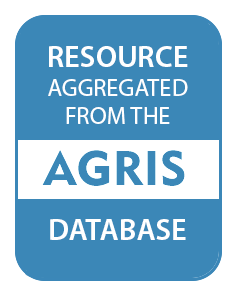What is AGRIS?
AGRIS (International System for Agricultural Science and Technology) is a global public database providing access to bibliographic information on agricultural science and technology. The database is maintained by CIARD, and its content is provided by participating institutions from all around the globe that form the network of AGRIS centers (find out more here). One of the main objectives of AGRIS is to improve the access and exchange of information serving the information-related needs of developed and developing countries on a partnership basis.
AGRIS contains over 8 million bibliographic references on agricultural research and technology & links to related data resources on the Web, like DBPedia, World Bank, Nature, FAO Fisheries and FAO Country profiles.
More specifically
AGRIS is at the same time:
A collaborative network of more than 150 institutions from 65 countries, maintained by FAO of the UN, promoting free access to agricultural information.
A multilingual bibliographic database for agricultural science, fuelled by the AGRIS network, containing records largely enhanced with AGROVOC, FAO’s multilingual thesaurus covering all areas of interest to FAO, including food, nutrition, agriculture, fisheries, forestry, environment etc.
A mash-up Web application that links the AGRIS knowledge to related Web resources using the Linked Open Data methodology to provide as much information as possible about a topic within the agricultural domain.
Opening up & enriching information on agricultural research
AGRIS’ mission is to improve the accessibility of agricultural information available on the Web by:
- Maintaining and enhancing AGRIS, a bibliographic repository for repositories related to agricultural research.
- Promoting the exchange of common standards and methodologies for bibliographic information.
- Enriching the AGRIS knowledge by linking it to other relevant resources on the Web.
AGRIS is also part of the CIARD initiative, in which CGIAR, GFAR and FAO collaborate in order to create a community for efficient knowledge sharing in agricultural research and development.
AGRIS covers the wide range of subjects related to agriculture, including forestry, animal husbandry, aquatic sciences and fisheries, human nutrition, and extension. Its content includes unique grey literature such as unpublished scientific and technical reports, theses, conference papers, government publications, and more. A growing number (around 20%) of bibliographical records have a corresponding full text document on the Web which can easily be retrieved by Google.
Members:
Resources
Displaying 2736 - 2740 of 9579Examining the relationships between land cover and greenhouse gas concentrations using remote-sensing data in East Asia
Measurements of land-cover changes suggest that such shifts may alter atmospheric concentrations of greenhouse gases (GHGs). However, owing to the lack of large-scale GHG data, a quantitative description of the relationships between land-cover changes and GHG concentrations does not exist on a regional scale. The Greenhouse Gases Observing Satellite (GOSAT) launched by Japan on 23 January 2009 can be of use in investigating this issue.
Managing semi-arid woodlands for carbon storage: Grazing and shrub effects on above- and belowground carbon
Shrub cover has increased in semi-arid regions worldwide. This change has generally been viewed as land degradation, due to shrub-induced declines in pastoral productivity. As a consequence, widespread management treatments to reduce shrub density have been applied in many pastoral areas. These treatments, however, often do not have long-term positive benefits for forage production.
How to sell ecosystem services: a guide for designing new markets
Payments for ecosystem services (PES) can improve environmental quality by aligning the incentives of individual landowners with societal interests in providing valuable ecosystem services such as carbon storage, water quality, flood control, and wildlife habitat. However, for this potential to be realized, many institutional details and technical challenges must be addressed.
Independent two-step thresholding of binary images in inter-annual land cover change/no-change identification
Binary images from one or more spectral bands have been used in many studies for land-cover change/no-change identification in diverse climatic conditions. Determination of appropriate threshold levels for change/no-change identification is a critical factor that influences change detection result accuracy. The most used method to determine the threshold values is based on the standard deviation (SD) from the mean, assuming the amount of change (due to increase or decrease in brightness values) to be symmetrically distributed on a standard normal curve, which is not always true.
GeoEye-1 and WorldView-2 pan-sharpened imagery for object-based classification in urban environments
The latest breed of very high resolution (VHR) commercial satellites opens new possibilities for cartographic and remote-sensing applications. In fact, one of the most common applications of remote-sensing images is the extraction of land-cover information for digital image base maps by means of classification techniques. The aim of the study was to compare the potential classification accuracy provided by pan-sharpened orthoimages from both GeoEye-1 and WorldView-2 (WV2) VHR satellites over urban environments.


